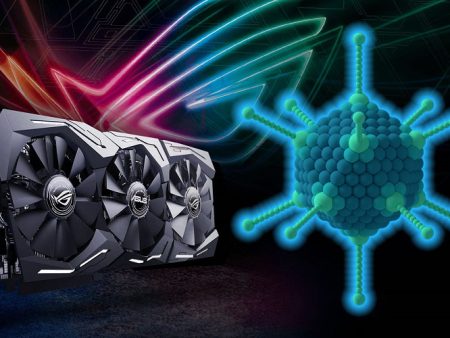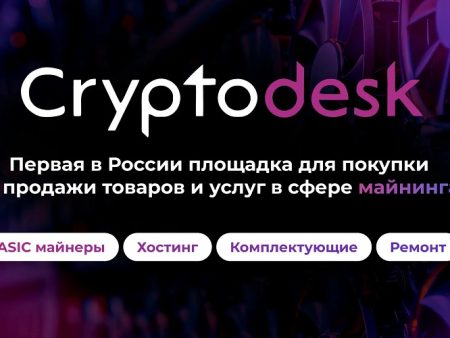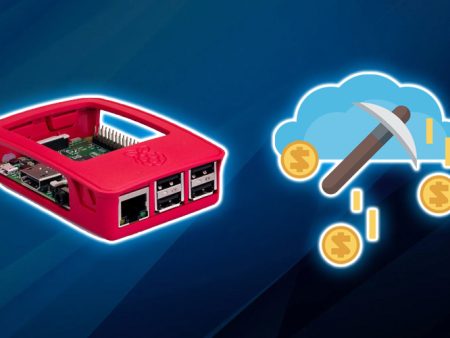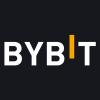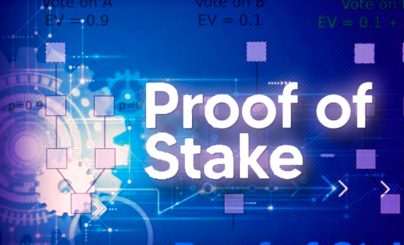
As of July 5, 2022, there are 2 methods of cryptocurrency mining – by Proof-of-Work (PoW) and Proof-of-Stake (PoS) consensus algorithms. The mechanisms have many differences. However, Proof-of-Stake mining of digital assets is becoming more popular every year. This fact is explained by the efficiency of the consensus algorithm.
PoS mining is the mining of digital assets by depositing investments. This approach allows blockchain participants not to use powerful equipment. But this mining method still requires large investments.
What is PoS mining
Mining according to the Proof-of-Stake mechanism is called staking. Mining with this method involves the creation of verification nodes in cryptocurrency networks. These are called validators. The nodes process transactions and sign blocks of digital chains. In return, validators receive rewards from the networks.
Starting a node is usually an expensive process. For example, to become a validator of the Ethereum 2.0 blockchain, you need to block 32 ETH – $35,800 at the exchange rate as of July 5, 2022. However, there are cheaper networks.
Key features
PoS mining requires freezing the coins of the networks of interest on cryptocurrency wallets or smart contracts of the respective chains. As of July 5, 2022, there are many staking pools. They are created by validators – nodes launched by large investors or popular cryptocurrency platforms. The pools allow customers to participate in steaking with minimal investments – from $1 or even less.
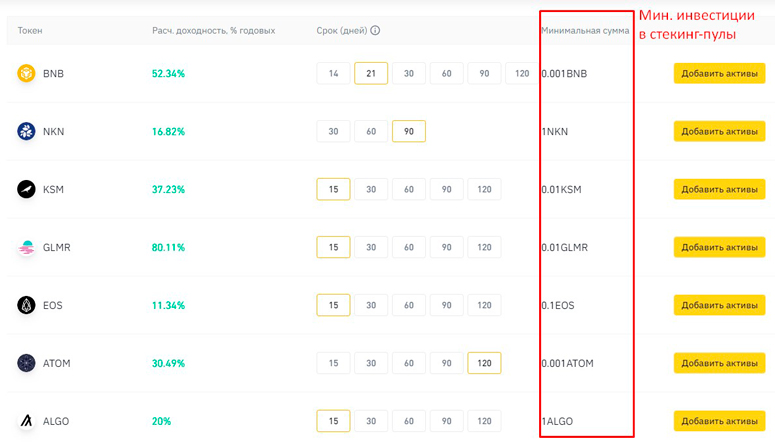
Nodes are rewarded for including blocks in digital networks. At the same time, a fixed number of validators are selected for each validation of links in virtual chains. For example, the BNB Smart Chain (BSC) network needs only 21 nodes. The validator is selected based on 3 parameters:
5020 $
бонус за нови потребители!
ByBit осигурява удобни и безопасни условия за търговия с криптовалути, предлага ниски комисиони, високо ниво на ликвидност и модерни инструменти за анализ на пазара. Поддържа спот и ливъридж търговия и помага на начинаещи и професионални трейдъри с интуитивен интерфейс и уроци.
Спечелете бонус 100 $
за нови потребители!
Най-голямата криптоборса, където можете бързо и безопасно да започнете пътуването си в света на криптовалутите. Платформата предлага стотици популярни активи, ниски комисиони и усъвършенствани инструменти за търговия и инвестиране. Лесната регистрация, високата скорост на транзакциите и надеждната защита на средствата правят Binance чудесен избор за трейдъри от всяко ниво!
- Age of the stake (total investment freeze time).
- Node status (internet speed).
- The value of the investment (number of coins).
Proof-of-Stake mining requires minimal power consumption. The validator needs a little bit of power to operate.
Usually, blockchain creators specify equipment specifications on their websites. Here is an example of the minimum equipment requirements for Eth2 ether steaking:
- Operating system – any 64-bit operating system.
- Central processor of the computer – AMD FX-8110 or Intel Core i5-7600.
- RAM – 4 GB.
- Free space – 20 GB.
- Internet speed – 10 Mb/s.
Also, when cryptomining by PoS, it is difficult to carry out a 51% attack. To carry it out, you need to block 51% of the already frozen coins – usually billions of dollars. This is not only very expensive, but also does not pay off the result of the attack.
When an attacker starts buying up that many tokens, the price of tokens will rise, exponentially increasing the cost of the attack.
Рентабилност
Staking often yields small annualized returns. Examples of profitability when storing different digital assets in a wallet account over a 12-month period.
| Криптовалута | Ticker | Блокчейн | Average profitability over 12 months (as of July 5, 2022) |
|---|---|---|---|
Comparison with PoW
The Proof-of-Work consensus algorithm is very different from the Proof-of-Stake mechanism. Comparison of PoW and PoS.
| Параметър | Доказателство за вземане | Доказателство за работа |
|---|---|---|
| Basic requirement for cryptocurrency mining | Availability of a large number of digital coins | Use of equipment with high hash rate |
| What investors do with the mined coins | Often accumulated for investment in Proof-of-Stake mining | Usually sold to pay for electricity |
| Who gets rewards from cryptocurrency networks | Chosen validators by randomly distributing rewards | Only miners who sign and include blocks in digital networks |
| Electricity consumption | Нисък | Very high |
What is Ethereum PoS mining
It refers to the mining of ETH coins in the Etherium 2.0 blockchain. This blockchain utilizes the PoS consensus algorithm. For this reason, mining in Ethereum 2.0 is done using the steaking method. To do this, ether holders must block coins on the Ethereum 2.0 smart contract and start nodes.
Once the validator is set up and enabled, the transaction and block verification process begins, and rewards are paid out.
Available cryptocurrency for mining
As of July 5, 2022, the most popular and profitable coins for PoS mining are:
- The Graph – up to 128.15%. A cryptocurrency token of a decentralized protocol. Developers use the application to create requests to the Ethereum blockchain.
- PancakeSwap – up 87.41%. Token of the decentralized exchange PancakeSwap. The protocol operates in the BSC network.
- Axie Infinity – up to 72.00%. Token from the creators of the GameFi-project of the platform of the same name. The game operates in the Ronin network – a sidechain of Ethereum.
- DeFiChain – up to 47.52%. Also a cryptocurrency of the platform of the same name. Its developers are creating a protocol to strongly scale the DeFi digital sector.
- EOS – up to 34.00%. The coin of the cryptocurrency project Block.one. Its creators launched their own blockchain (an Ethereum competitor) on their platform to provide clients with high bandwidth – the ability to conduct transactions quickly.
- Osmosis – up to 29.93%. The token of the cryptocurrency platform of the same name. The main elements of the trading system of the platform are based on the developments of the Tokyo Exchange.
- Secret – up to 24.97%. Coin of the Secret Network project. Its developers create a confidential blockchain with the possibility of using smart contracts by different companies.
- THORchain – up to 19.31%. Coin of the cryptocurrency project THORchain. Its blockchain is based on the principles of decentralization and anonymity. The network allows users to quickly transfer many popular digital coins between chains.
- Kusama – up to 15.26%. A cryptocurrency coin of the same name on the blockchain. The network is a parallel Polkadot blockchain that allows developers to test new protocols and other solutions before official launch.
- Cronos Coin – up to 14.75%. The token of the Cronos cryptocurrency system. The project is engaged in spreading decentralized protocols and creating its own blockchain.
How to start PoS mining
The start of cryptocurrency mining by the method of setting up a validator is done with the help of special software. The algorithm of actions on the example of the Efirium 2.0 blockchain looks like this:
- Open the official Ethereum Launchpad.
- Click on “Become a validator”.
- Read all the terms and conditions and rules.
- Choose 1 of the 4 offered executor clients (for Eth1) and install it (instructions are on the page).
- Click on “Continue”.
- Choose 1 of the 4 consensus programs and download it (manuals are available on the Ethereum website).
- Click on “Continue”.
- Specify the number of nodes to run.
- Select the operating system of the hardware for PoS mining.
- Generate a pair of cryptocurrency keys.
- Download the validator keys file.
- Create a wallet and replenish the balance of the etherium address.
- Download deposit_data.json.
- Validate cryptocurrency vault mnemonics and save keys.
- Upload deposit_data.json to the PoS mining management site and connect the wallet to the service.
- Block ethers on the smart contract.
Once the PoS algorithm is executed, Ethereum mining will start automatically. Self-stacking will use the processing power of the equipment.
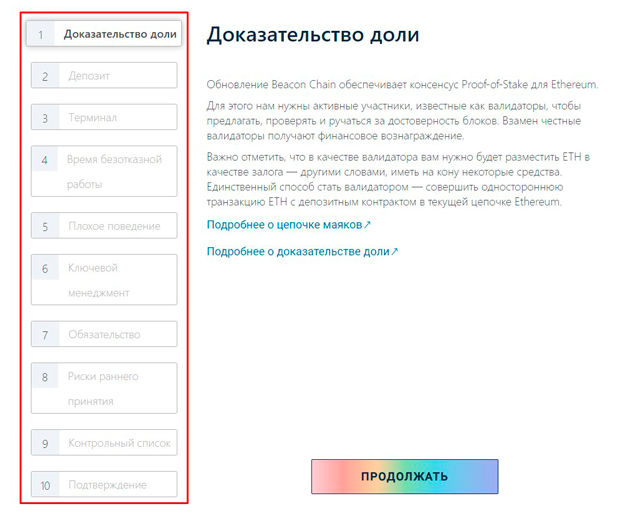
It is easier to start PoS mining through a steaking pool. The algorithm of connecting to a trusted validator on the example of the Binance Staking service is as follows:
- Go to the website of the cryptocurrency system Binance.
- Open the list of Earn tools.
- Go to the Binance Earn section.
- Select “ETH Staking 2.0” from the “Staking” list.
- Click “Start Steaking”.
- Specify the amount of steaking.
- Check the “I have read and agree to the Binance Staking Service Agreement” checkbox and click “Confirm”.
Once the algorithm is complete, the specified number of cryptocurrency coins will be invested in the staking pool. ETH mining will start automatically without utilizing the power of the hardware.
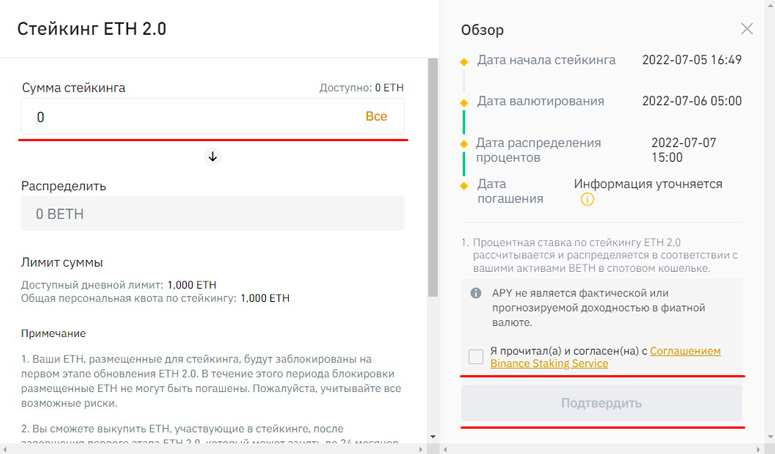
Advantages and disadvantages
The pros and cons of PoS mining.
| Предимства | Недостатъци |
|---|---|
| High environmental safety. Validation does not require a large hash rate, so the process does not require a lot of electricity. | Reduced turnover of cryptocurrencies. Investors are interested in depositing coins rather than trading on the digital asset market. |
| Minimal risks of losing your investment. Usually, cryptocurrency can be withdrawn from the staking and sold at any time. | The presence of the threat of decentralization. Large blockchain nodes collect a lot of coins in the same hands. |
| Availability of Proof-of-Stake mining of cryptocurrencies without specialized knowledge. PoS mining through pools is available to many users. | Low profit. The profitability of steaking many popular cryptocurrencies rarely exceeds 20%. |
| Lack of geographical binding. You can run nodes-validators even on laptops. | High threshold of entry. Launching your own node requires large investments. However, steaking pools solve this problem. |
| High technical security of networks with the Proof-of-Stake algorithm | |
| Large selection of cryptocurrency platforms for PoS mining of digital assets |
Заключения
PoS in mining is a cryptocurrency consensus algorithm. It determines the methods of operation of blockchains and the terms of payment of rewards to validators – nodes of networks with Proof-of-Stake. Mining cryptocurrencies according to PoS is called staking. It involves blocking digital assets in wallets or on smart contracts of networks.
As of July 5, 2022, there are 2 PoS mining methods:
- Single-stacking. This method requires running your own validator node.
- Collaborative steaking. This method requires participation in a pool.
Често задавани въпроси
❓ Is PoW or PoS better?
The Proof-of-Stake algorithm is more promising than Proof-of-Work because of the scalability of cryptocurrency networks. At the same time, the consensus mechanism under consideration is considered to be more secure.
❕ Is solo PoS mining or pool steaking better?
In terms of profitability, it is better to choose the first option. The second steaking method is suitable for investors with small investments.
✅ Which cryptocurrencies should be mined?
It is recommended to steak those coins whose prices may increase in the future. This will increase the profit of PoS mining.
⭐ Why did Proof-of-Stake become popular?
Blockchains with this algorithm have a high potential for scaling. Also, PoS mining does not require a lot of electricity and is relatively simple.
💰 The best cryptocurrencies by profitability of steaking?
The 5 most profitable digital assets are GRT, CAKE, AXS, DFI and EOS.
Има ли грешка в текста? Маркирайте я с мишката и натиснете Ctrl + Въведете
Автор: Saifedean Ammous, експерт в областта на икономиката на криптовалутите.


